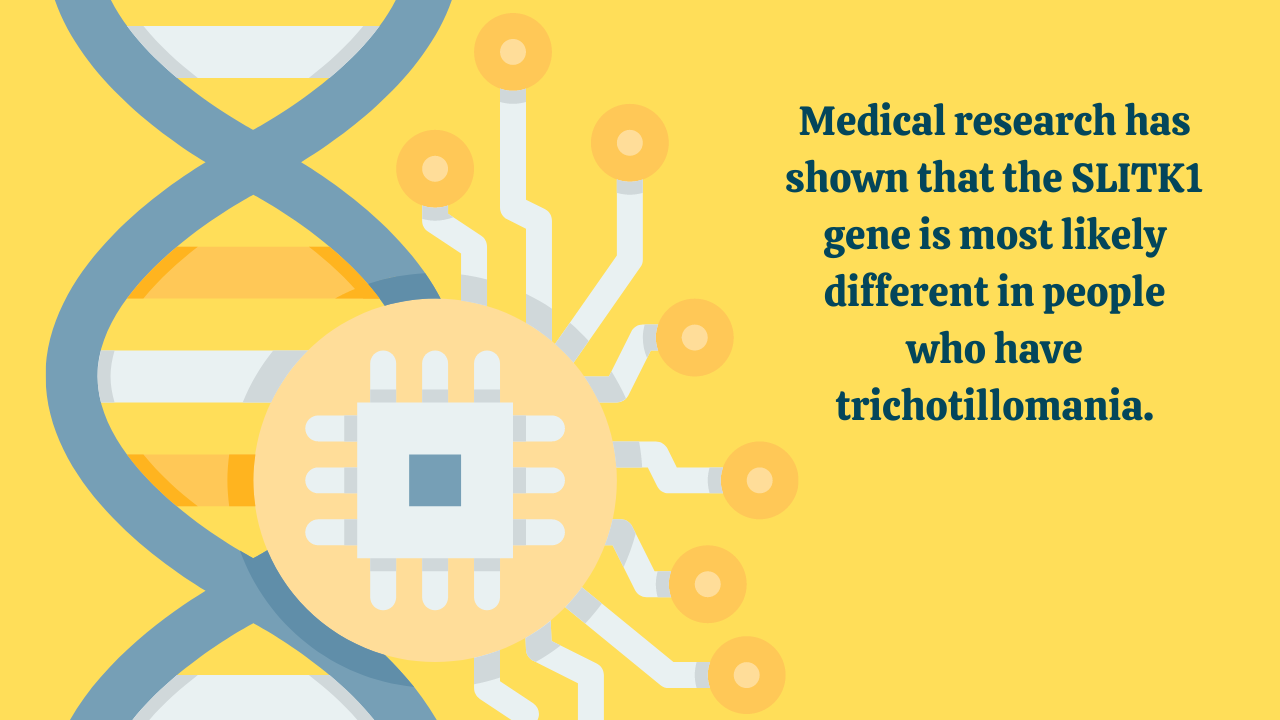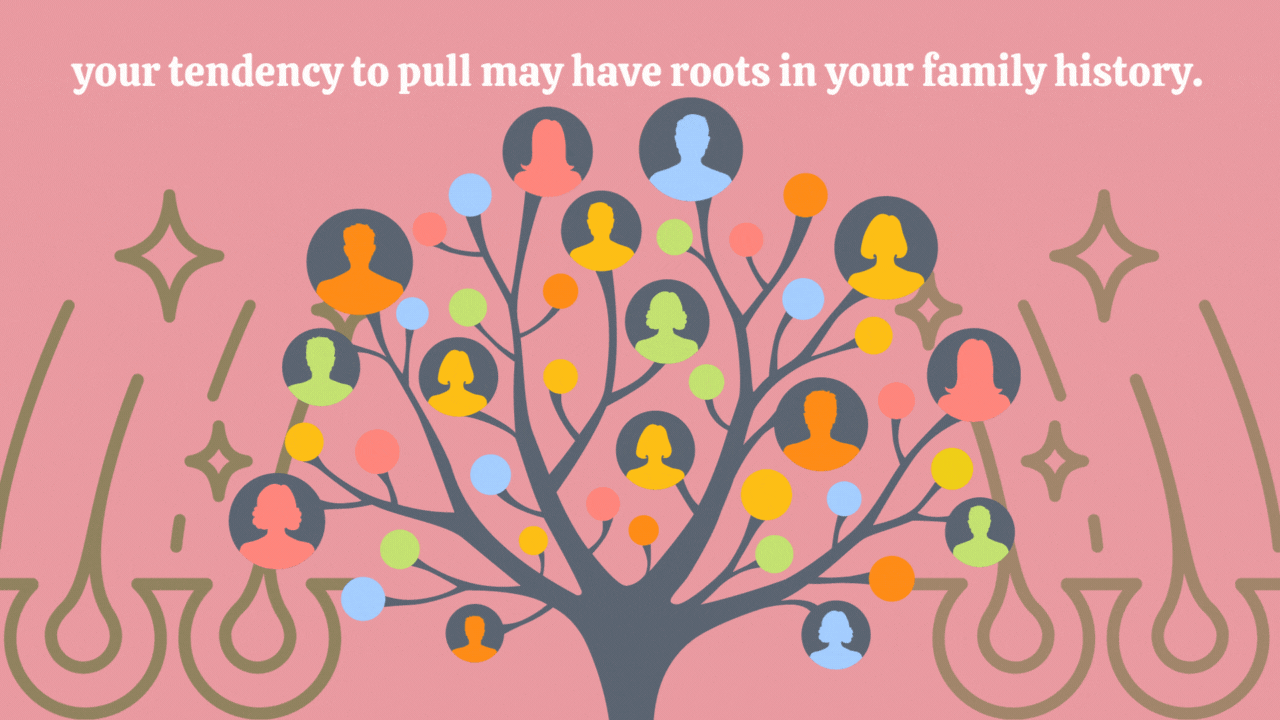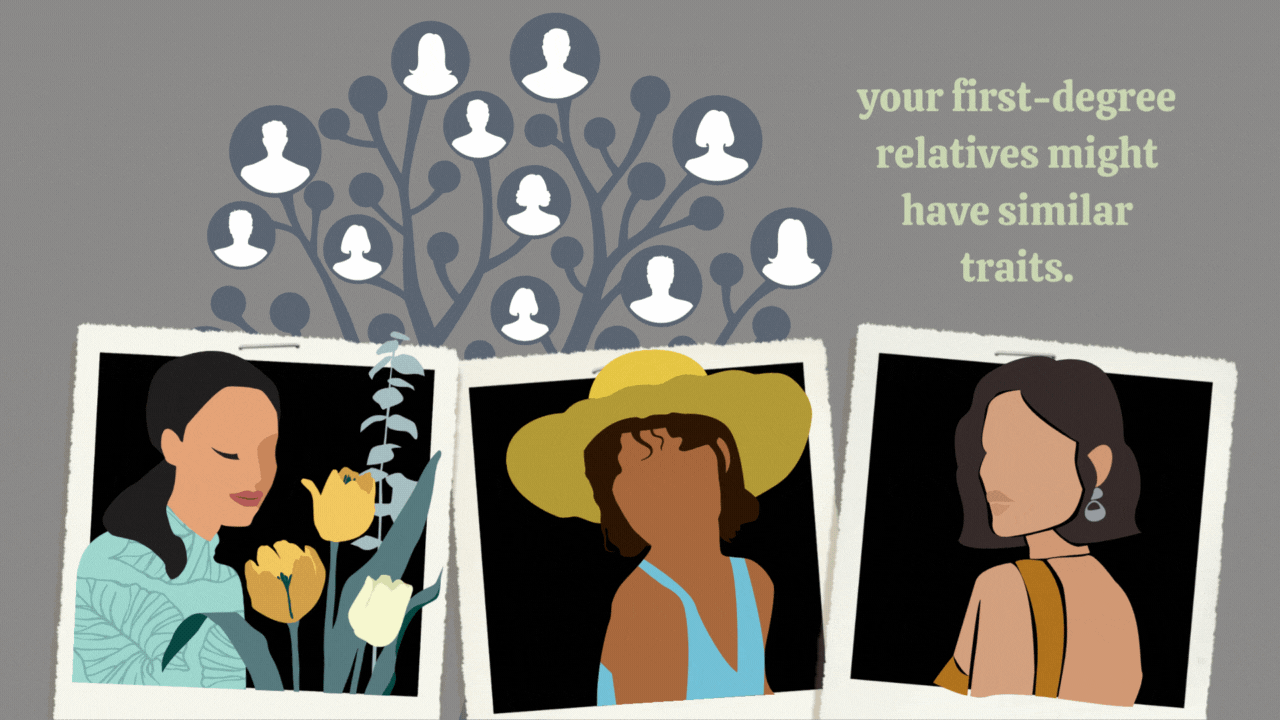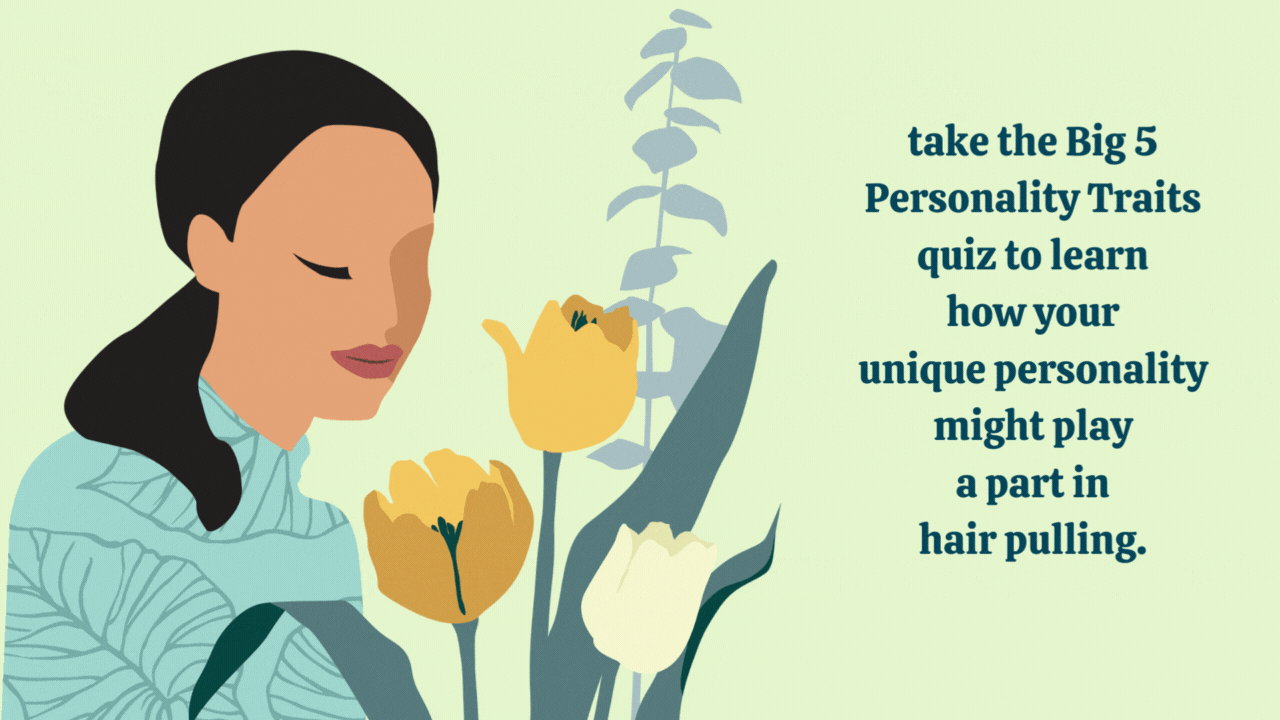Is it genetic? How family history and the SLITRK1 gene affects trichotillomania
Trichotillomania, or chronic hair pulling, is known to be heritable, suggesting a
possible family link. Research involving families and twins has also shown a
higher occurrence of hair pulling when one or more family members also have trichotillomania.
One specific study explored heritability across three generations of male relatives, pointing to a potential familial connection. Scientists have even discovered a rare variant of the SLITRK1 gene that could contribute to the development of the medical condition.
SLITRK1 gene: trichotillomania & conditions like Tourette’s syndrome
The SLITRK1 protein is potentially involved in directing the development of specialized projections (axons and dendrites) that enable each nerve cell to connect with adjacent cells.
Researchers showed interest in the SLITRK1 gene because previous studies have linked it to similar emotional health conditions that also involve repetitive and uncontrollable behaviors, like Tourette’s syndrome.

This evidence shows a definite connection between genetic differences and the onset of trichotillomania in people studied.
The study’s lead researcher Dr. Stephan Züchner says, "Society still holds negative perceptions about psychiatric conditions such as trichotillomania.
But, if we can show they have a genetic origin,
we can improve diagnosis, develop new therapies
& reduce the stereotypes.
we can improve diagnosis, develop new therapies
& reduce the stereotypes.
To be clear, this means that while you may be born with a modified SLITRK1 gene, it doesn't necessarily mean you will develop trichotillomania. Rather, it means you may be predisposed for the condition, and something in your environment amplifies it to cause hair pulling urges to flare up.
Learn more about genetic testing for the SLITK1 gene here.

Forms of trichotillomania may be impacted by genetics
These subtypes seem to respond differently to treatment.
Treating trichotillomania based on subtypes
The link between family genetics
& trichotillomania
A first-degree relative refers to a person's closest blood relatives, which include their parents, siblings, and children.
These family members share approximately 50% of their genes with the individual in question, making them genetically the closest relatives.

Neuropsychological constructs are often used in research to understand the underlying mechanisms of various cognitive, emotional, and behavioral phenomena.
The prevalence of impulsive personality traits in hair pulling

Therapy options to help with emotional dysregulation
DBT was originally developed as treatment for borderline personality disorder (BPD), but it has grown in application to other conditions as it has offered significant improvements for people who are suicidal or have emotional control issues.
EFT is particularly useful for individuals struggling with attachment and relationship issues, as well as those experiencing emotional dysregulation.
ACT aims to help individuals accept their emotions and thoughts without judgment, allowing them to better cope with emotional dysregulation.

CBT therapists may work with clients to develop emotion regulation skills, such as identifying emotions, understanding the links between thoughts and emotions, and implementing adaptive coping strategies.
It is essential to work with a qualified, trich-informed mental health professional who can tailor a therapeutic approach to the unique needs of the person seeking help.
Future research in family traits
& trichotillomania
References

Our educational resources are designed with your individual needs in mind to help you create a personalized self-care plan that is tailored to your unique circumstances.
Together, let's find what works best for you!
Hey beautiful, join us on the socials.
Disclaimers
We donate 10% of every dollar earned from the UnTrick YourselfTM self-help course to our annual scholarship program that awards college scholarships to women who have trichotillomania.
The information in this website is for educational use only and is not intended to provide medical diagnosis, advice or treatment. Appropriate medical treatment and advice should be obtained directly from a qualified and experienced doctor and/or mental health professional.
Emergency? If you or any other person are feeling suicidal or are in immediate crisis - don't use this site.
These resources can provide you with immediate help worldwide.
Copyright © 2023-2025, Healing from Hair Pulling. All rights reserved.




